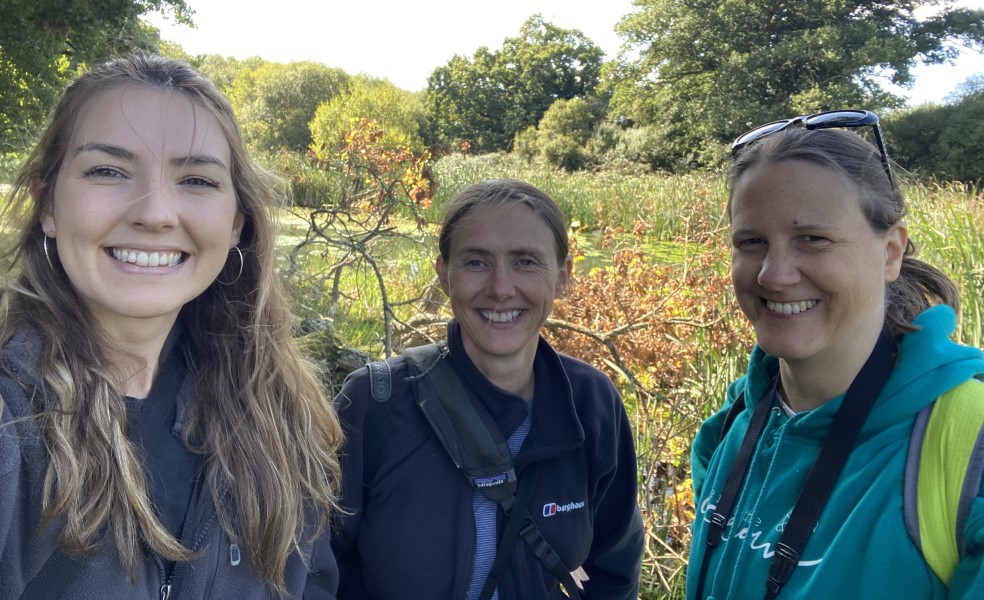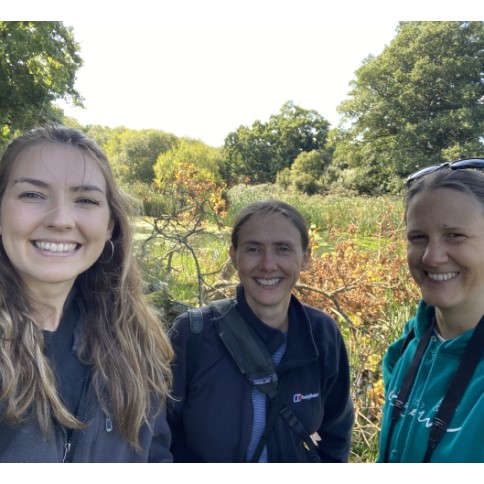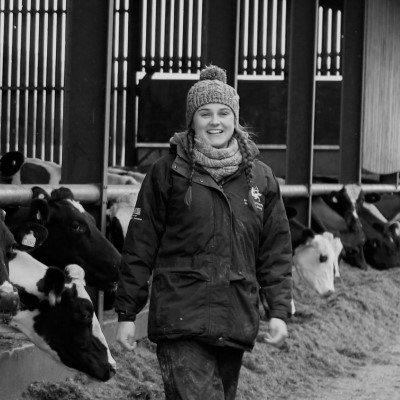CIEL | Blog: Using human behavioural science to support innovation adoption
Suzanne Rogers, Jo White and Sophie Lewis – Human Behaviour Change for Life (HBCL)

When looking at innovation adoption in agriculture, recognising that knowledge isn’t always the key barrier can help us be more effective in our campaign and intervention for farmer adoption of innovation. By using human behavioural science, we can better support innovation adoption.
As part of the CIEL Insights series, we’re shining a spotlight on overcoming key barriers when it comes to innovation adoption – covering the impact of legislation, cross-sector differences, the retailer perspective and explore successful methods of driving change across the industry. Alongside a panel discussion webinar which was held on 14 February, is accompanied by a number of of blogs and podcasts focused on gaining different perspectives from key stakeholders across the livestock industry on the theme of Farmer Adoption of New Innovation.
HBCL is a team of human behaviour change specialists and experts. With enthusiasm ‘to create effective positive change for our planet we must consider the behaviour of humans themselves.’ Thanks to Suzanne Rogers, Jo White and Sophie Lewis for taking the time to write this blog exploring how the use of human behavioural science can support the adoption of innovation in agriculture:
Many of us can relate with being motivated to do something and knowing what needs to be done, and yet we still struggle to change our behaviour. It should not be surprising then that those interventions (e.g. campaigns) that are developed with the focus on providing resources aimed at addressing gaps in knowledge, do not often lead to the level of change that we expect or desire.
When looking at innovation adoption in the farming sector, truly recognising that knowledge is often not the key barrier can help us to be more effective in our campaign and intervention design.
So, if the barrier to adopting new behaviours is not knowledge, then the first step is to find out what is. This means rolling up our sleeves and getting stuck into research. By talking to those we are supporting to change and asking carefully framed questions, we can start to unravel the true drivers and barriers to action or inaction. While avoiding making assumptions. Do they know how to do the behaviour, are they physically able to do it, do they have the time to do it, is it safe, is it a priority for them right now?
Interestingly, a recent CIEL Blog by Professor David Rose effectively highlights some of the results of such research in regards to farmer adoption of new innovative technologies. The importance of this understanding phase should not be underestimated. Crucially, it avoids designing a campaign or intervention based on addressing the wrong barrier. Which can often lead to wasted time, money and energy.
Once you have understood why a behaviour is happening or not, then you can move to planning an intervention that specifically meets the drivers or barriers identified. This might be a focus on upskilling, persuasion and more, and could come in the form of training, mentorship, campaigns, regulations and enforcement.
No matter which approach you use, or which barrier you are addressing, your audience will undeniably have a different viewpoint to you. They will have different priorities and ultimately, you can’t make people care about the same things that you do.
In other words, one person might see the primary reason for adopting a new piece of technology as a way to help with environmental protection, but another farmer might see it as a way to ensure the quality of the land is maintained for their children to take over the farm and continue the family business. It is clear that although these are two very different viewpoints, they ultimately share the same goal. The key to finding this common ground is to identify the values that matter to the people you are supporting to change, so you can create a campaign or intervention that is framed in a way that will resonate with them so you can work together.
It may sound obvious, but it’s worth asking – what would help make this change easier for this audience? The response can highlight important themes that can help make a behaviour easier to adopt. For example, the role of ‘support’ may be important in the chosen approach, such as the influence of peers, roles models, and respected ‘authorities’ such as vets, agronomists and advisors amongst the farming community.
At HBCL we apply the science of human behaviour change to many different issues across the living world, including animals, people and the wider environment. We have first-hand experience working with several organisations involved in the farming sector to understand farmer behaviours and design intervention campaigns. Most recently, we undertook a pilot project aimed at encouraging sheep and cattle farmers to adopt and use nutrient management plans (NMPs). We spoke to, and engaged with, many farmers and really got to know them; understanding their values, their motivations, and the challenges they face. We then used the information gained from this initial research, to develop messaging and imagery that addressed the identified barriers and drivers in a way that resonated with their values. We then went back to the farmers and tested the messaging and images with them, asking for their feedback and initial reactions. This added to our understanding by confirming our interpretation of the information gathered in the first phase. A secondary, but equally powerful, result of this co-creation approach was that the farmers themselves were empowered in the campaign development process, increasing buy-in and ensuring they were heard. We then tweaked the messaging and imagery and repeated the process. Only by going through this method were we able to design recommendations for a campaign that we were confident would have the desired effect. Finally, incorporating monitoring and evaluation from the beginning will allow you to know how the intervention is progressing in terms of adoption.
Traditionally, impact is measured in numbers and whilst this is important, the information gathered from the conversations conducted throughout the project provides the opportunity for a much more creative approach. This might take the form of case studies, quotes, vox pop footage and much more, to bring the changes to life.
If you would like to know more about using behaviour change science in your project, then please get in touch. We would love to get involved in more work in this area.


Suzanne Rogers, Jo White and Sophie Lewis
Suzanne rogers and Jo White are the co-founders and co-directors of HCBL. Suzanne and Jo gravitated towards each other as they shared the same unwaning enthusiasm for all things ‘human behaviour change’. Despite having many different roles Suzanne has a long-held interest in the behaviour of animals, including the human animal.
Jo White has had a life-long fascination with human behaviour, with a belief that positive change is worth perusing even in the most challenging of situations. This led to embedding the principles and theories of human behaviour change into her work, including research, education, training, campaigning, communications, advocacy, project design and implementation, and strategy development.
Sophie Lewis became fascinated with the interconnection between nature and the human environment and the different disciplines used to study these while completing her BSc (Hons) in Environmental Science and an MSc in Climate Change. Sophie’s role at Human Behaviour Change for Life is enabling her to continue to make a tangible positive impact on the environment, animals and human wellbeing.







